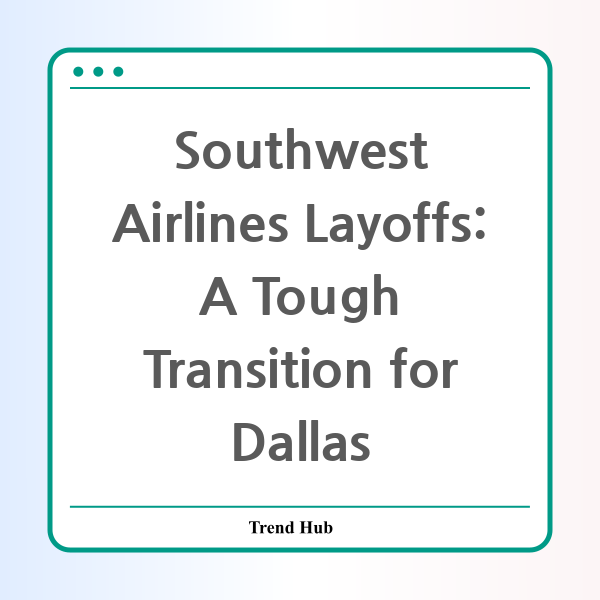* This website participates in the Amazon Affiliate Program and earns from qualifying purchases.

In a drastic shift that has sent shockwaves through the aviation industry, Southwest Airlines has announced its decision to lay off approximately 15% of its corporate workforce. This translates to about 1,750 jobs being cut from the organization. As the airline braces for significant changes, it’s essential to understand the implications of this unprecedented move, especially for employees and the broader community in Dallas.
CEO Bob Jordan characterized this announcement as a pivotal moment for the company, emphasizing that it marks the first large-scale layoff in Southwest's 53-year history. The airline has faced mounting pressure to streamline operations and cut costs, strategies that have become increasingly vital in a highly competitive market.
One of the core motivations behind these layoffs is a projected cost saving of $210 million this year and an expected $300 million by 2026. These figures highlight the urgency behind the decision, as the company aims to transform into a more agile and efficient organization. The layoffs are set to be completed by the end of the second quarter, with many affected employees receiving their salaries, benefits, and bonuses until then.
Jordan’s message to staff reinforced the challenging nature of these decisions, stating, "This decision is unprecedented in our 53-year history, and change requires that we make difficult decisions." Such comments reflect the culture shift within Southwest, as it grapples with the reality of needing to become leaner to survive in a demanding industry.
Beyond job cuts, Southwest has implemented various measures to reduce costs, including a hiring freeze, suspending its internship program, and discontinuing traditional team-building rallies that have been part of the company’s culture since 1985. Even more telling are the aggressive cuts to unprofitable routes, which further illustrate the serious measures the airline is willing to take.
Changes within Southwest Airlines also reflect broader trends in the airline industry. With the shift from their long-standing open seating model to assigned seating and the introduction of overnight flights, it is clear that the airline is not only adjusting its workforce but also refining its operational framework. These modifications aim to enhance customer experience while also addressing profitability concerns.
For many employees in Dallas and across the nation, this announcement raises numerous questions about the future. Job security has become a paramount concern as the airline navigates through economic pressures and strives to meet the demands of investors, notably after an activist investor secured five board seats, further pressuring the leadership team for changes.
In conclusion, the layoff of 1,750 employees represents a critical juncture for Southwest Airlines. As the airline seeks to recalibrate and reshape its future, the impact on its dedicated workforce in Dallas cannot be overlooked. While the company is striving for efficiency and sustainability in an ever-evolving market, employees and stakeholders will be watching closely to see how these changes unfold. If you work for Southwest or have ties to the industry, understanding these developments is crucial as they may redefine the landscape of air travel in the United States.
* This website participates in the Amazon Affiliate Program and earns from qualifying purchases.